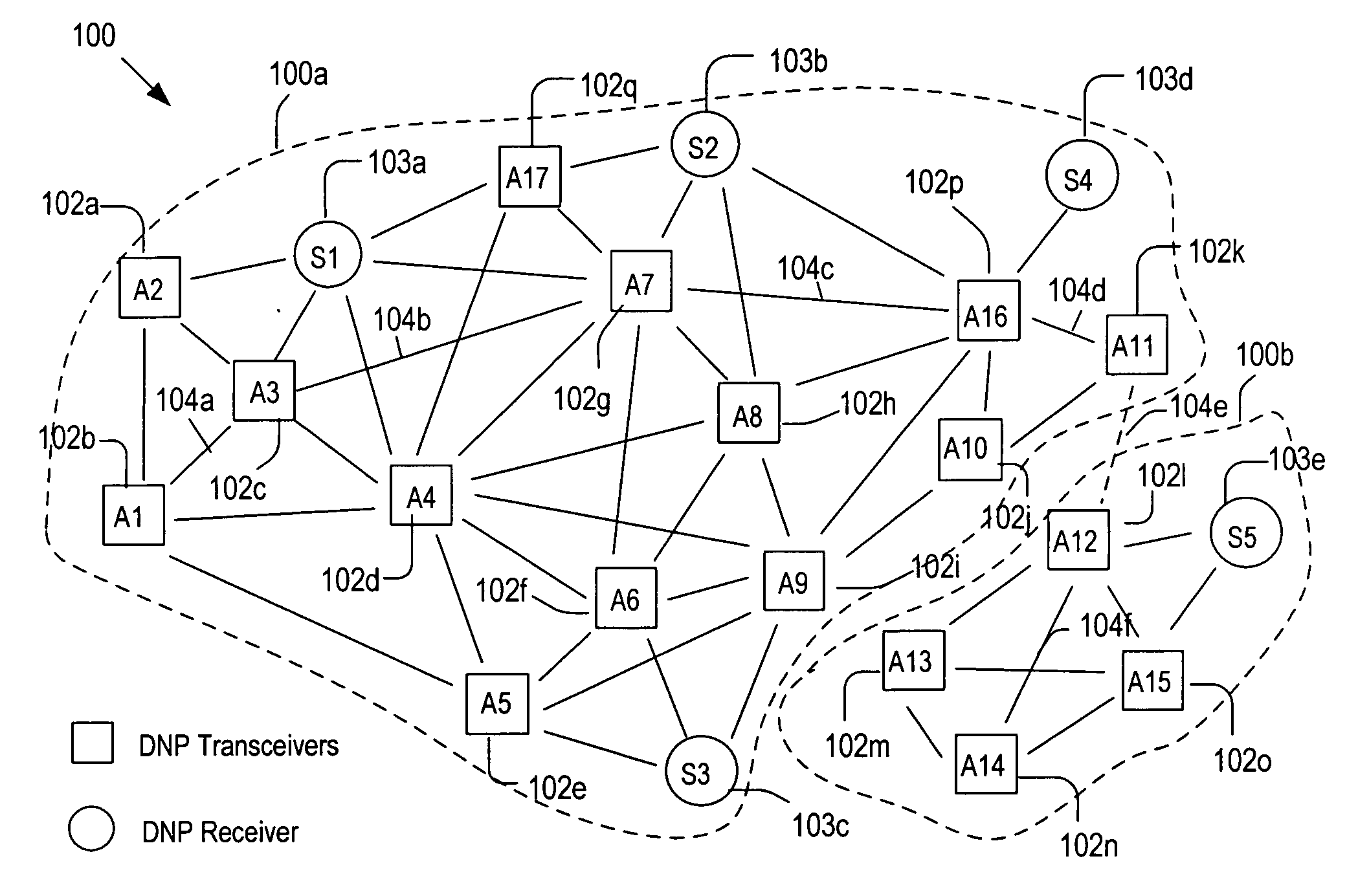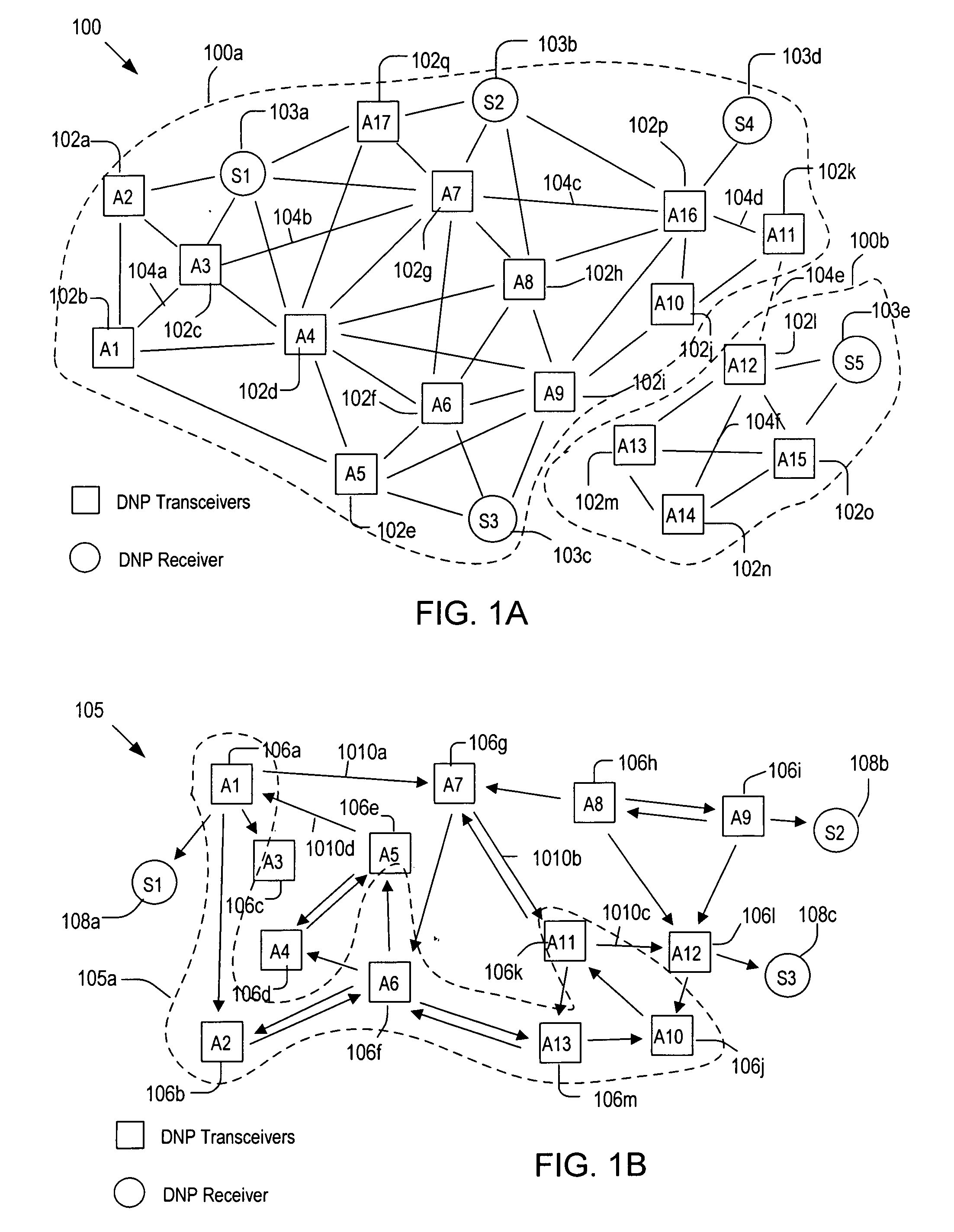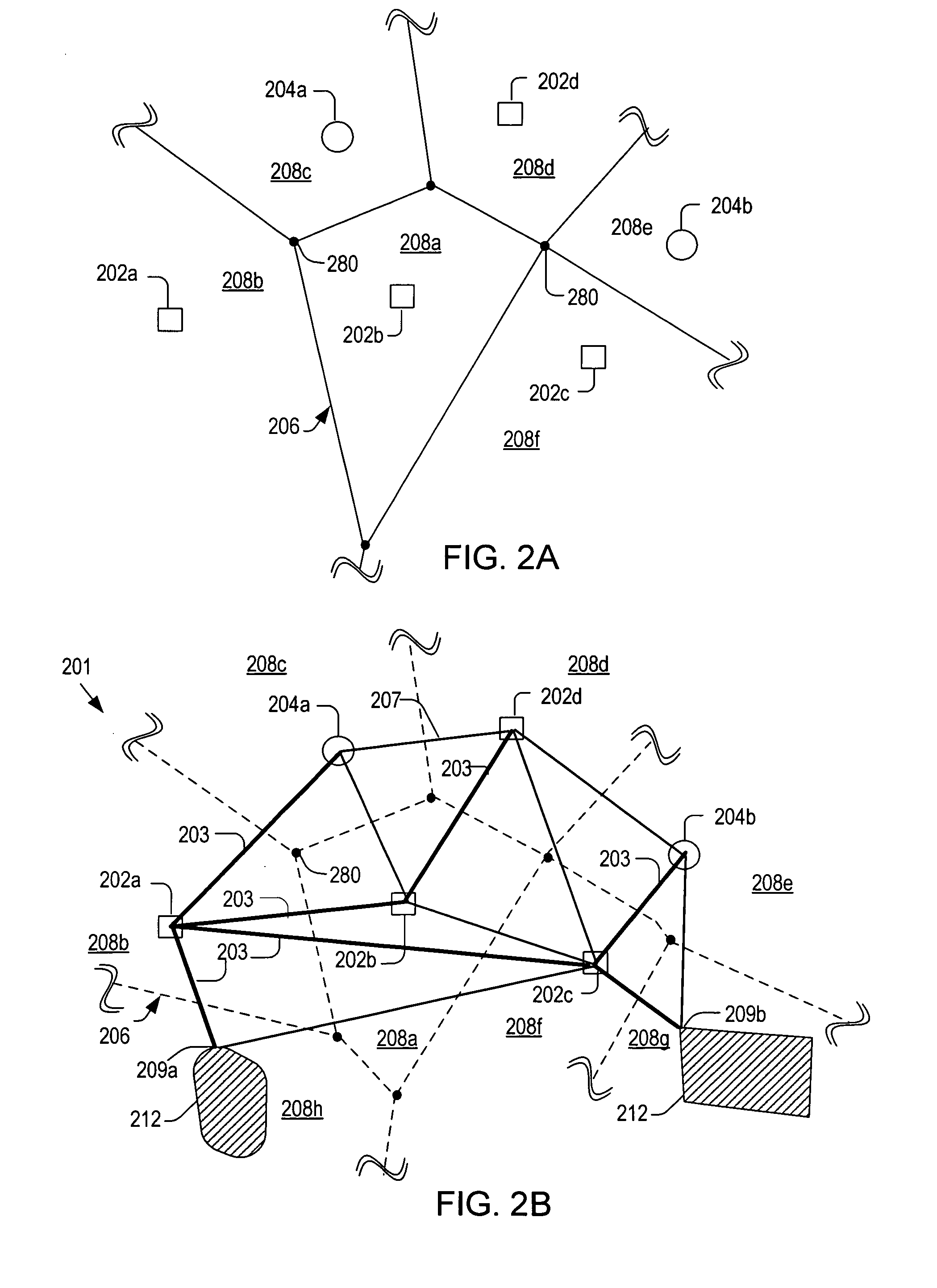Methods of networking interrogation devices for structural conditions
a network interrogation device and structural condition technology, applied in the field of structural condition diagnosis, can solve the problems of time-consuming and expensive passive diagnostic system, difficulty in regional monitoring and adaptive self-sensing, and increased complexity of arranging and operating patches
- Summary
- Abstract
- Description
- Claims
- Application Information
AI Technical Summary
Benefits of technology
Problems solved by technology
Method used
Image
Examples
Embodiment Construction
[0030] Although the following detained description contains many specifics for the purposes of illustration, those of ordinary skill in the art will appreciate that many variations and alterations to the following detains are within the scope of the invention. Accordingly, the following embodiments of the invention are set forth without any loss of generality to, and without imposing limitation upon, the claimed invention.
[0031]FIG. 1A shows an undirected Euclidean graph 100 for networking patches 102 and 103 in accordance with one embodiment. The patches 102 may be transceivers that can generate and / or respond to Lamb waves while the patches 103 may be receivers that can only develop electrical signals in response to the Lamb waves. More detailed description of the patches or nodes 102 and 103 can be found in the previously referenced U.S. patent application Ser. Nos. 10 / 942,714, 10 / 942,366, 11 / 304,441, 11 / 391,351, 11 / 414,166,11 / 445,452, 11 / 502,127, and 11 / 502,319. The Euclidean g...
PUM
| Property | Measurement | Unit |
|---|---|---|
| temperature | aaaaa | aaaaa |
| pressure | aaaaa | aaaaa |
| length | aaaaa | aaaaa |
Abstract
Description
Claims
Application Information
 Login to View More
Login to View More - R&D
- Intellectual Property
- Life Sciences
- Materials
- Tech Scout
- Unparalleled Data Quality
- Higher Quality Content
- 60% Fewer Hallucinations
Browse by: Latest US Patents, China's latest patents, Technical Efficacy Thesaurus, Application Domain, Technology Topic, Popular Technical Reports.
© 2025 PatSnap. All rights reserved.Legal|Privacy policy|Modern Slavery Act Transparency Statement|Sitemap|About US| Contact US: help@patsnap.com



